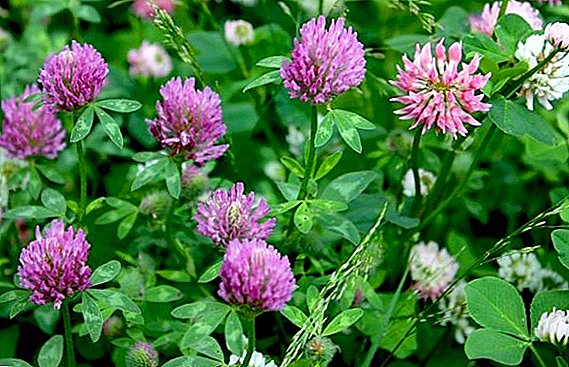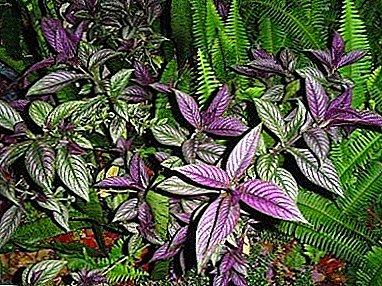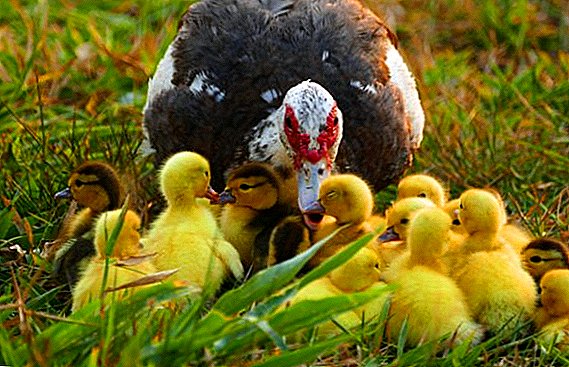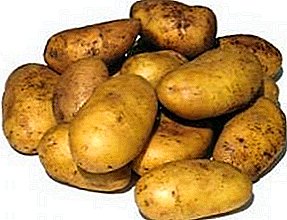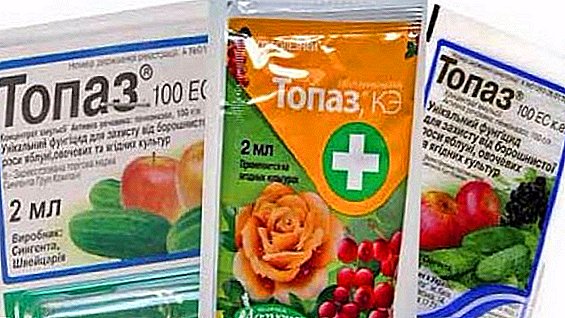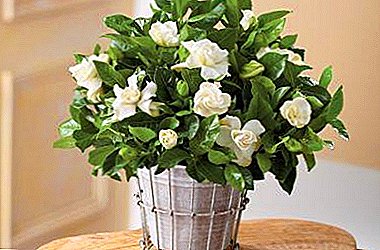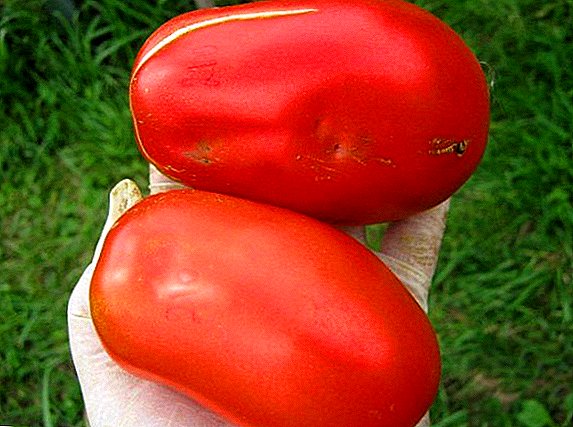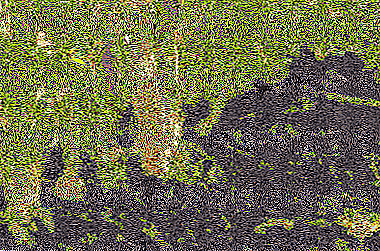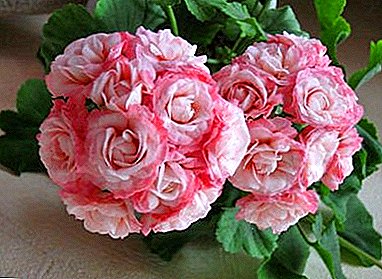
Terry varieties of pelargonium occupy a special place in the hearts of gardeners - lush buds look very beautiful and impressive. Due to the long, decorative flowering, these plants are planted on balconies, window sills and suburban areas.
Pelargonium Norland deserves special attention, so consider how to plant properly and care for a flower? How to protect against pests and propagate.
Botanical description and history
Norland - terry, zonal geranium, a distinctive feature of which is considered an increased decorative effect. This is a hybrid that can be grown both on the windowsill and in the open field. Some seed producers attribute this variety to rosebud, but this is not the case - this is pelargonium of the zonal type.
Nortland is quite unpretentious, he needs a standard care and watering. The only difficulty that a beginner grower can face is the formation of a bush.
Description of appearance and features
The variety is very beautiful - large, saturated pink shade terry inflorescences that resemble peony buds. High bush with dense bright green foliage on which unique buds look great.
Important! The plant gives long and strong shoots, and if you do not use pruning and pinching, the decorativeness of the pelargonium bush is completely lost. Although in conditions of open ground, pelargonium can be allowed to grow as it wants.
Where and how to plant it?
If you decide to plant this flower with seeds, then no one will give you clear recommendations on sowing. Experts advise sowing seeds in spring or summer, when there is a lot of heat and sunlight.
Experienced growers consider the best time for planting - the beginning of March. Then the first buds can be seen in July. Some say that it should be sown at the end of November at the beginning of December, arguing that when germinating seeds, sunlight is not necessary, and when seedlings appear, you can set the backlight. Therefore, they are engaged in seedlings almost all year round. It is worth noting that geranium will grow to medium size in about 4-5 months.
Lighting and location
 Like all pelargoniums, Norland needs sanctification, there should be a lot of light, but direct sunlight can leave burns on leaves and flowers. Therefore, at noon, you need to equip a shading the rest of the time the light should be good and diffused.
Like all pelargoniums, Norland needs sanctification, there should be a lot of light, but direct sunlight can leave burns on leaves and flowers. Therefore, at noon, you need to equip a shading the rest of the time the light should be good and diffused.
And direct sunlight and lack of light equally affect pelargonium - it refuses to bloom. At the same time formed lush green.
Norland is a variety that does not tolerate stuffiness, the optimum temperature for good growth and vigorous flowering is + 18-23 degrees in summer, but in winter it is enough +12. The open air favorably affects geranium, which is why it is settled for the summer on the terrace, balcony or in the garden.
Soil requirements
Soil for zonal pelargonium needs a very nutritious, fertile, saturated with microelements. You can buy it in the store or make it yourself. The composition of the soil is as follows:
- 2 parts peat;
- 2 pieces of leafy ground;
- 1 part of coarse sand.
Plant is very important drainage. Pelargonium does not like stagnant water in the pot, while the roots rot and the plant dies. As the drainage used claydite, pebble fines, crushed brick, fine gravel, and so on. The roots of the plant need oxygen, so the earthy one needs to be constantly loosened.
How to care?
Pelargonium Norland - grows well and blooms in a pot on the windowsill, but in order for the flowering to be abundant, you will have to care for it. The rules are not complicated, but in order for the plant to be strong and healthy, it is desirable to carry them out without question.
Watering
In summer, watering should be abundant and very frequent, since in the hot period of time, the flower buds of pelargonium, from lack of moisture, may fall off. But at the same time, it is not necessary to re-moisten the plant, and if moisture has accumulated in the pan after watering, it needs to be drained - this will prevent rotting of the roots.
When watering, use only separated, soft water, which does not contain calcic inclusions. It is not necessary to spray pelargonium during flowering, it can not only lose its decorative effect, but also rot.
Top dressing
For Norland pelargonium only mineral fertilizers are applicable. Feed the plant is strictly prohibited. But this concerns not only this variety, all geraniums have a negative attitude towards organic fertilizers. It is better to make mineral complexes during the active growing season and rapid flowering. Top dressing is done every 2 weeks in the summer. As for the winter period, it is not necessary to make additional food.
Transfer
 Pelargonium does not like frequent changes, therefore, until the pot is not, obviously, it is better not to touch it tight. To determine this is very simple - the roots of the plant will stick out of the drainage holes.
Pelargonium does not like frequent changes, therefore, until the pot is not, obviously, it is better not to touch it tight. To determine this is very simple - the roots of the plant will stick out of the drainage holes.- Do not take a large pot when transplanting - Pelargonium will stop blooming, each new pot should be 1.5 cm longer than the previous one. Flowering begins only after the earthy clod is completely filled with roots.
- Pot soil should be completely replaced.To do this, carefully release the roots from the old soil, trying not to damage them, then transfer the pelargonium to the new soil. Top-dressing after transplantation is not carried out for a month and a half, as the new earth is already nutritious.
- You can not touch the plant during the active growing season., you need to wait until pelargonium ottsvetet and goes into a state of rest. She will also tolerate a transplant in early spring.
Attention! Many flower growers claim that after pelargonium grows up to 30 cm in height, it is no longer necessary to replant it.
Pruning
Pelargonium Norland needs high-quality and regular pruning. This is the only way to form a beautiful, compact and dense bush with large double flowers.
This process is produced in spring, shoots are shortened by a third. Pruning allows you to stimulate the flower to the formation of new shoots and lush flowering. If no pinching and pruning are done, then the geranium will stretch into a high-rise, lower leaves will crumble from the stalks and flowers can be left without waiting. In the fall, dry and weak shoots are removed from the bush, so that during the rest period the pelargonium gains strength for new flowering.
Video lesson pruning pelargonium:
Common diseases and pests
There is no home plant that would not be subjected to diseases and attacks of pests and Norland pelargonium is no exception. What infections and insects can harm a plant:
 Gray rot - the most common disease of fungal origin, which spreads very quickly. The first sign of gray rot is the spots that can appear on any part of the flower, the first leaves are affected, then the stems and buds. A parasitic fungus develops if there is a lot of nitrogen and moisture in the soil.
Gray rot - the most common disease of fungal origin, which spreads very quickly. The first sign of gray rot is the spots that can appear on any part of the flower, the first leaves are affected, then the stems and buds. A parasitic fungus develops if there is a lot of nitrogen and moisture in the soil.To cope with the disease will help fungicides: Vitaros, Rovral, Fundazol.
- Root and stem rot - by name you can understand which parts of the plant they infect. The reason is all too wet.
- Whitefly, mealybug - a plant affected by these insects ceases to grow, loses its decorativeness, fades, and if not dealt with, it may die. To combat you need to use special chemicals - insecticides.
Breeding features
The most common method of reproduction of pelargonium is grafting, and consider it. If it is decided to cut the stalk from the mother plant, then it is better not to let it bloom for a year, only then the planting material will be strong and healthy. If everything is done correctly, then in the same summer young plants will delight in their flowering.
The action algorithm is as follows:
- Shoots for breeding cut in March, for this use a sharp, sterile instrument. The cut is made at an angle of 45 degrees. On the handle you need to leave 2-3 internodes.
- The cuttings are dried in air for 10 hours.
- Remove leaves from the bottom of the prepared stalk, otherwise they may rot in the ground.
- The cuttings are immediately placed in the ground, which consists of sand, soil, perlite and vermiculite. Before planting, moisten the substrate.
- Cover the shank with a glass jar, while not forgetting to air every day.
- The roots of the escape will appear in about a week and a half. Immediately after that, they remove the jar, and the young plant is fed with a mineral complex.
Pelargonium Norland - a flower that is loved in many countries. The decorative qualities of the plant and the simplicity of care allow you to grow this beautiful flower everywhere.


 Pelargonium does not like frequent changes, therefore, until the pot is not, obviously, it is better not to touch it tight. To determine this is very simple - the roots of the plant will stick out of the drainage holes.
Pelargonium does not like frequent changes, therefore, until the pot is not, obviously, it is better not to touch it tight. To determine this is very simple - the roots of the plant will stick out of the drainage holes. Gray rot - the most common disease of fungal origin, which spreads very quickly. The first sign of gray rot is the spots that can appear on any part of the flower, the first leaves are affected, then the stems and buds. A parasitic fungus develops if there is a lot of nitrogen and moisture in the soil.
Gray rot - the most common disease of fungal origin, which spreads very quickly. The first sign of gray rot is the spots that can appear on any part of the flower, the first leaves are affected, then the stems and buds. A parasitic fungus develops if there is a lot of nitrogen and moisture in the soil.